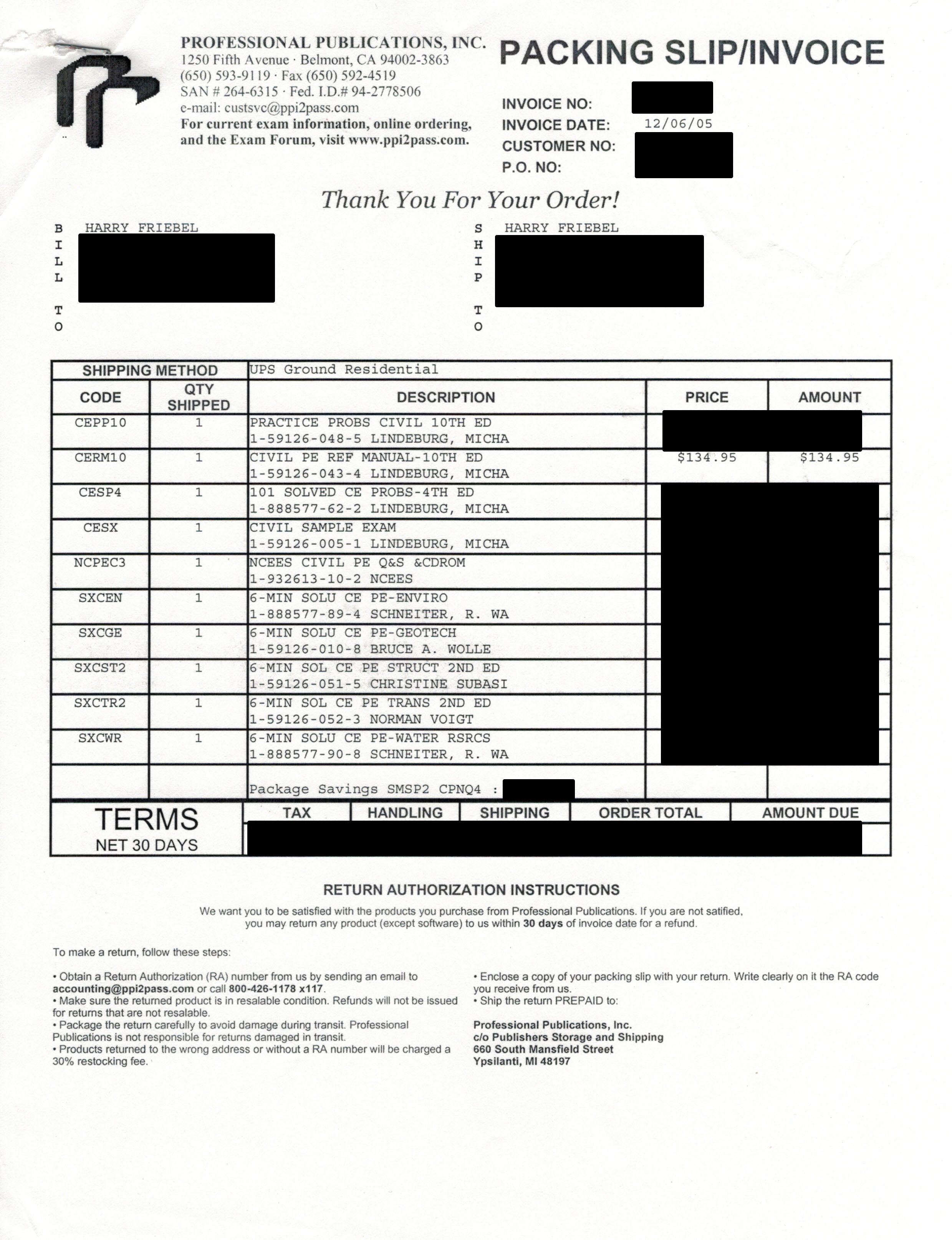Harry here – With the New Year upon us I thought now be a good time to start breaking down the new Spring (April) 2015 NCEES exam.
Regarding Water Resources and Environmental Engineering, the AM portion of the exam focuses entirely on Water Resources (i.e., no Environmental in the morning – at least according to the NCEES breakdown.) I know this change will make a lot of you happy. Below are the topics to be covered during the Breadth (AM) portion of the April 2015 exam:
Water Resources and Environmental (17.5% – 7 out of 40 questions)
A. Open-channel flow
B. Storm water collection and drainage (e.g., culvert, storm water inlets, gutter flow, street flow, storm sewer pipes)
C. Storm characteristics (e.g., storm frequency, rainfall measurement and distribution)
D. Runoff analysis (e.g., Rational and SCS/NRCS methods, hydrographic application, runoff time of concentration)
E. Detention/retention ponds
F. Pressure conduit (e.g., single pipe, force mains, Hazen-Williams, Darcy-Weisbach, major and minor losses)
G. Energy and/or continuity equation (e.g., Bernoulli)
VIII. Site Development (2.5% – 1 out of 40 questions)
C. Temporary and permanent soil erosion and sediment control (e.g., construction erosion control and permits, sediment transport, channel/outlet protection)
This brings the total Water Resources problems up to 20% for the Breath (AM) exam for – similar to years before. But you should notice all environmental problems have been removed (see below.)
Regarding other topic areas, general observations are there is significant emphasis on Construction and Transportation has been reduced by 50% for the Breath (AM) exam.
For those that care (DO NOT STUDY – NO LONGER RELEVANT,) below are the previous Water Resources and Environmental Engineering topics covered from April 2008 through October 2014 for the Breadth (AM) portion of the exam:
Water Resources and Environmental 20%
A. Hydraulics – Closed Conduit
1. Energy and/or continuity equation (e.g., Bernoulli)
2. Pressure conduit (e.g., single pipe, force mains)
3. Closed pipe flow equations including Hazen-Williams, Darcy-Weisbach Equation
4. Friction and/or minor losses
5. Pipe network analysis (e.g., pipeline design, branch networks, loop networks)
6. Pump application and analysis
B. Hydraulics – Open Channel
1. Open-channel flow (e.g., Manning’s equation)
2. Culvert design
3. Spillway capacity
4. Energy dissipation (e.g., hydraulic jump, velocity control)
5. Stormwater collection (e.g., stormwater inlets, gutter flow, street flow, storm sewer pipes)
6. Flood plains/floodways
7. Flow measurement – open channel
C. Hydrology
1. Storm characterization (e.g., rainfall measurement and distribution)
2. Storm frequency
3. Hydrographs application
4. Rainfall intensity, duration, and frequency (IDF) curves
5. Time of concentration
6. Runoff analysis including Rational and SCS methods
7. Erosion
8. Detention/retention ponds
D. Wastewater Treatment
1. Collection systems (e.g., lift stations, sewer networks, infiltration, inflow)
E. Water Treatment
1. Hydraulic loading
2. Distribution systems

 by
by 



